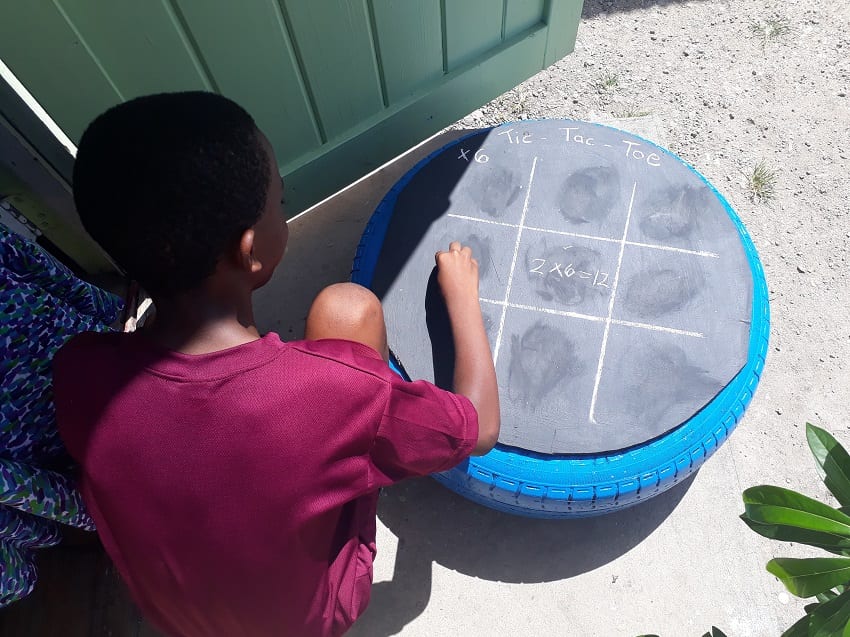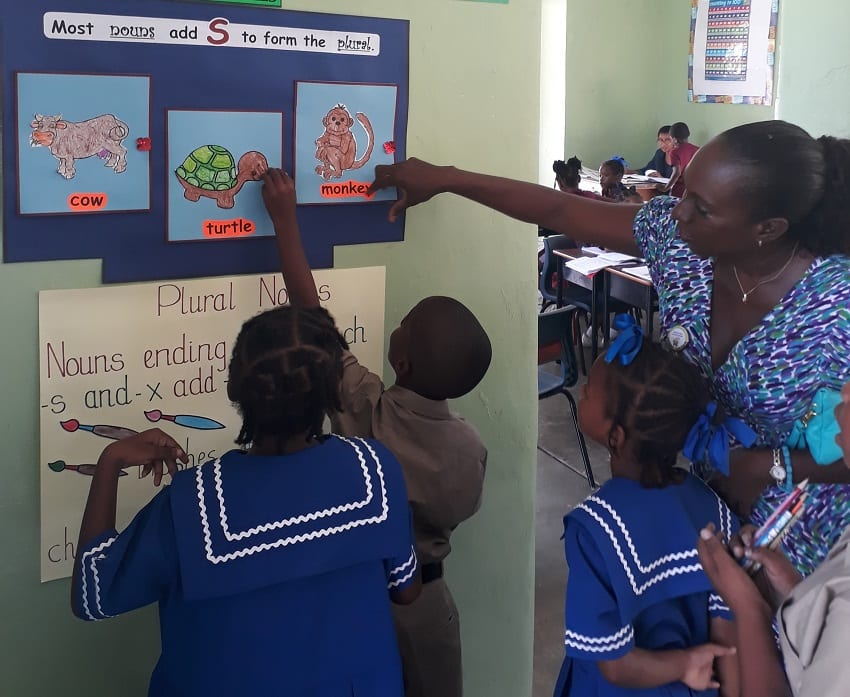
This game of tic-tac-toe teaches children the multiplication tables in a fun and interactive way. (GP)
Parents, teachers and principals from across the school system got an opportunity to see the School Teacher Effectiveness Plans (STEPs) pilot project in action recently when the Wesley Hall Junior School held an Open Day.
Themed: Exploring an Educational Jungle, it showcased how the pilot project is being used to effect change in the way subjects are taught from Class One to Class Four at the school.
Principal, Herbert Gittens, said the basic concept of the STEPs pilot project was student-centred learning, with the teacher as the facilitator of learning. To this end, Wesley Hall Junior School has been transformed into what he terms as a “pic-rich” learning environment.
“[STEPs] proposes that you do a lot of activities for the children, let them be involved in their learning so you set up learning centres; Mathematics corners, language corners, spelling and so on. A lot of the students’ work is displayed. You bring in resource persons and do field trips and nature walks, dramatizations and look at differentiated instruction. We [at Wesley Hall] try to reach each student where they are… We use a variety of learning processes so you can use a picture, dramatize, use video and use technology so that the child who can’t appreciate it one way would pick it up some other way.
“That is what is referred to as differentiated instruction. One of the things that we concentrate on are ‘pic-rich’ classrooms. Because the education philosophy speaks about children learning from seeing things over and over and doing things consistently. So STEPS for us, has given us a greater focus in terms of reaching all of our children to ensure that learning takes place in a healthy environment,” Mr. Gittens explained.

An example of one of the ‘picture rich’ classrooms at Wesley Hall Junior School. Here, Class One pupils learn about the different types of nouns. (GP)
During the Open Day, Class One students mounted a display with special emphasis on the different types of nouns, while the Class Twos focused on the languages – Spanish in particular. The Class Three pupils looked at recycling, food security, school beautification and problem-solving techniques.
Through a collaboration with the City of Bridgetown Credit Union, which has adopted the school and the Barbados Museum and Historical Society, Class Three students also embarked on a six-week programme where they learned about artefacts, heritage and culture.
They took part in archaeological digs, actually made artefacts and were taught how to catalogue information on each ‘relic’ as they would in an actual museum.
Not to be left out, the Class Four pupils looked at the topic of Finance for their display by building a ‘bank’ and using recycled bottle caps as currency. The aim was to help students consolidate the concept of money in their Math syllabus.
There was also a popular reading corner and students made animal cookies in keeping with the theme to help with their expository composition.
STEPs, a critical component of the Education Sector Enhancement Project II, aims to transform learning and teaching in schools. The concept was framed within the context of identifying models and tools to guide teachers and schools towards being more effective.
It is expected that this will result in the overall improvement in student performance, especially in literacy, numeracy and science.
Seven other schools are part of the STEPs pilot project: St. Philip Primary; St. Elizabeth Primary; Belmont Primary; Wilkie Cumberbatch Primary; Chalky Mount Primary; Elliott Belgrave Primary and the St. Martin-Mangrove Primary Schools.
